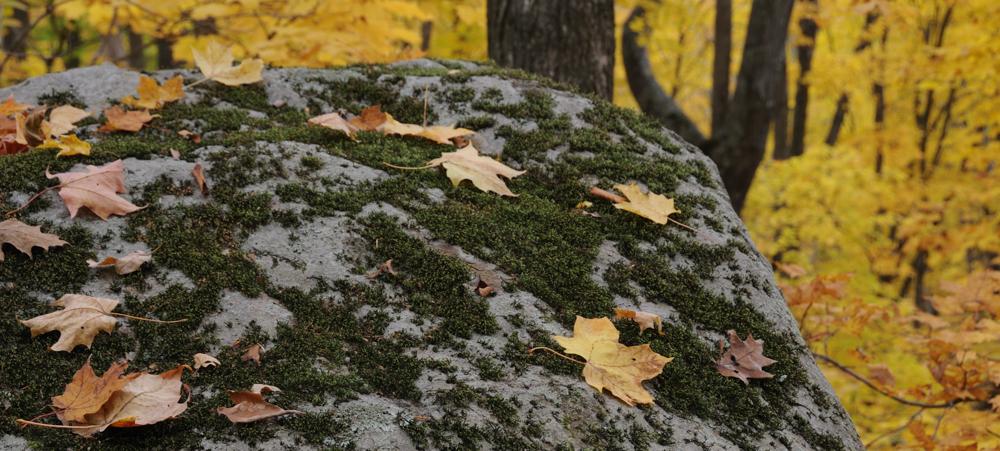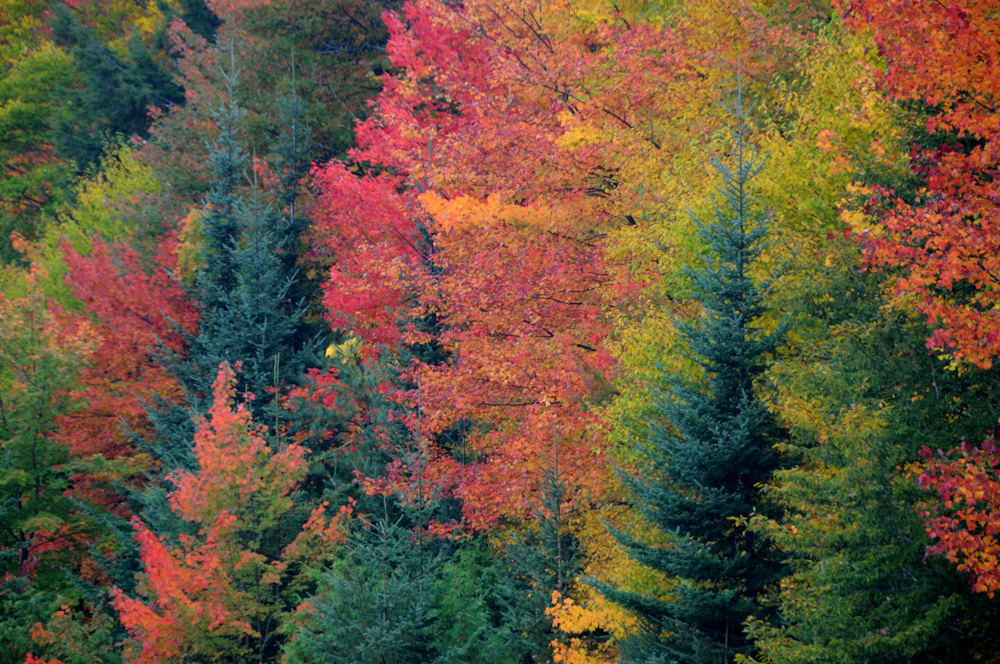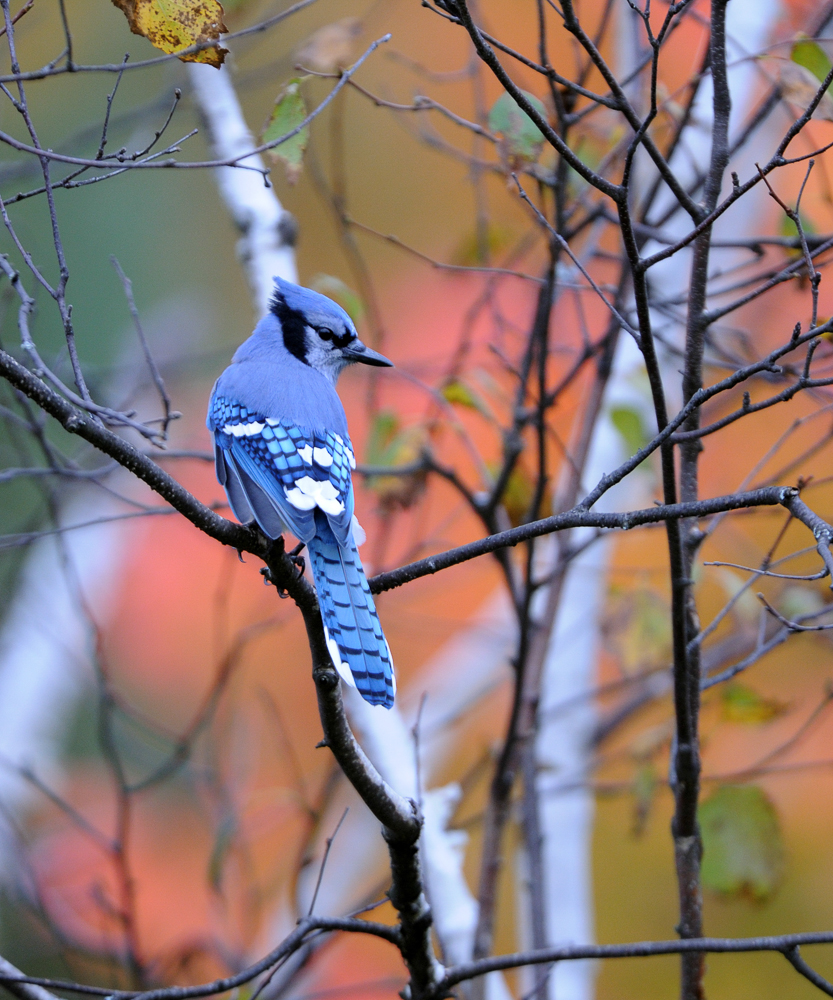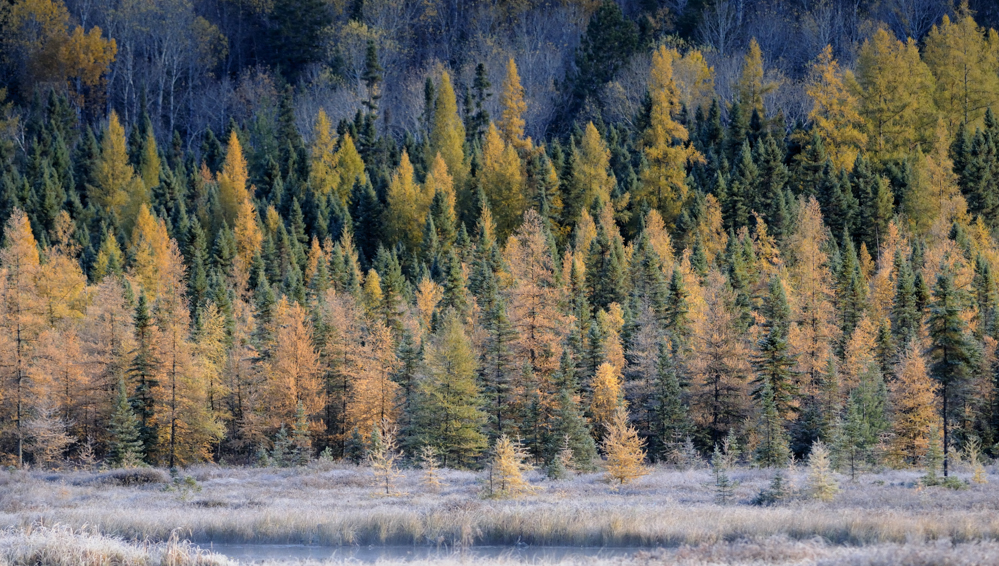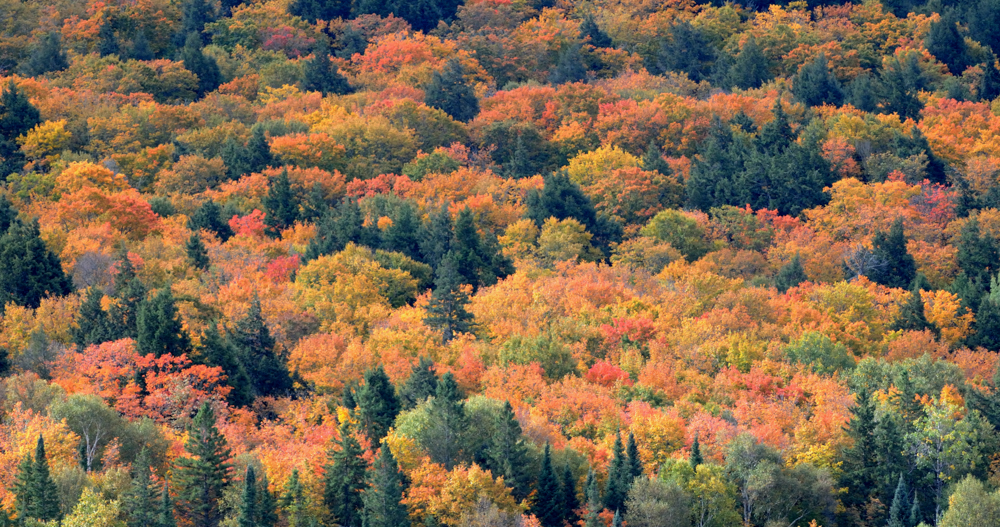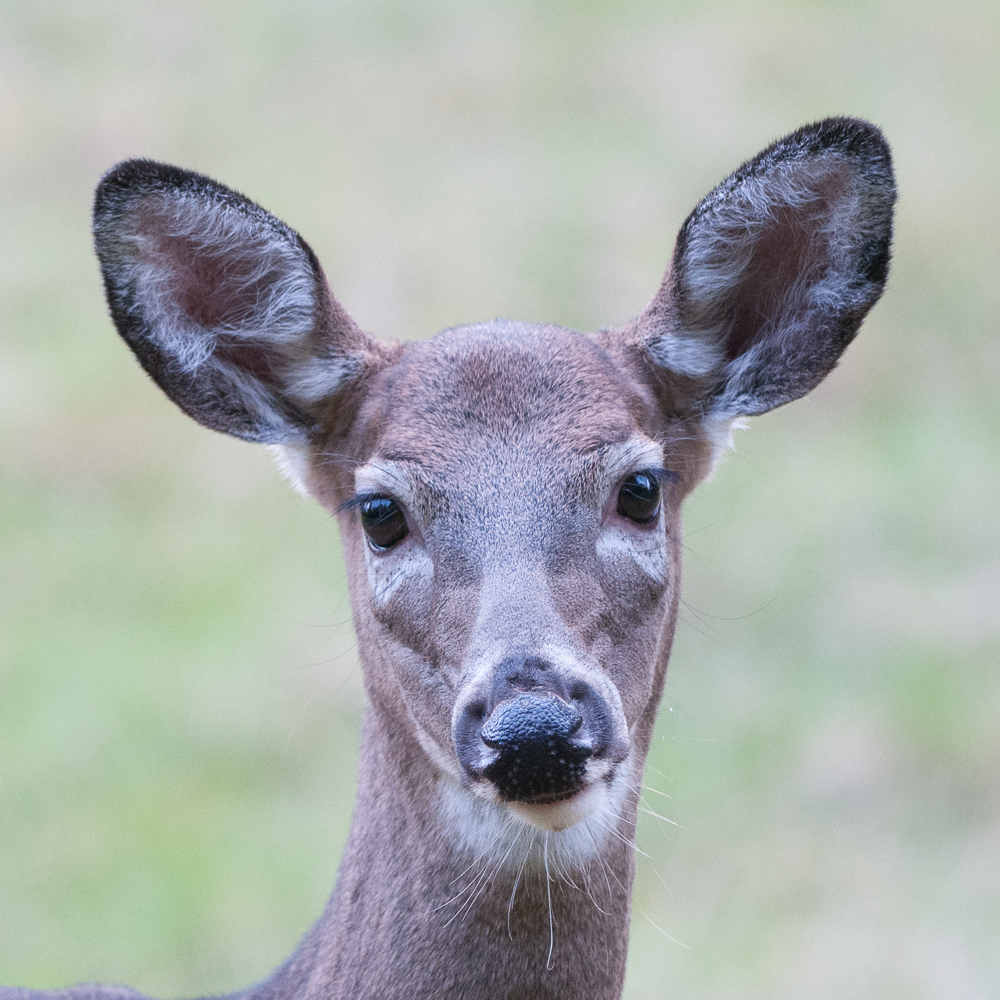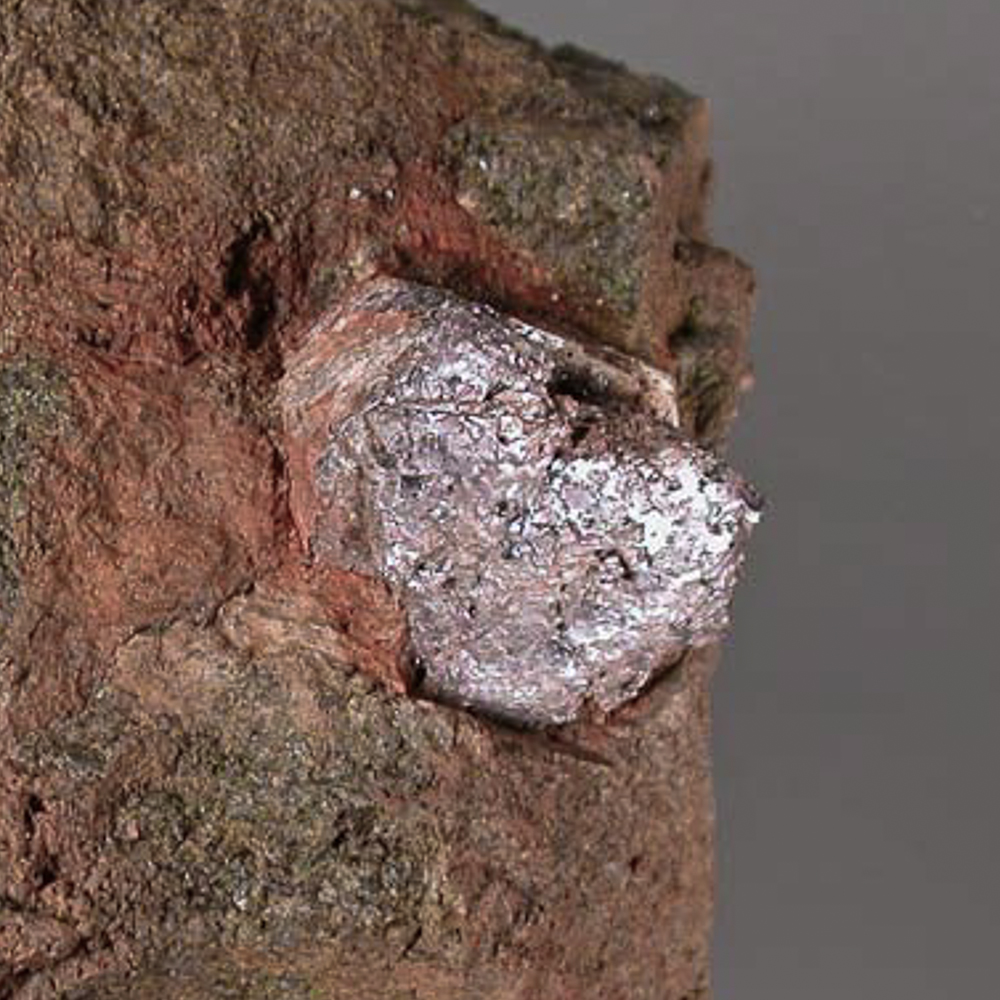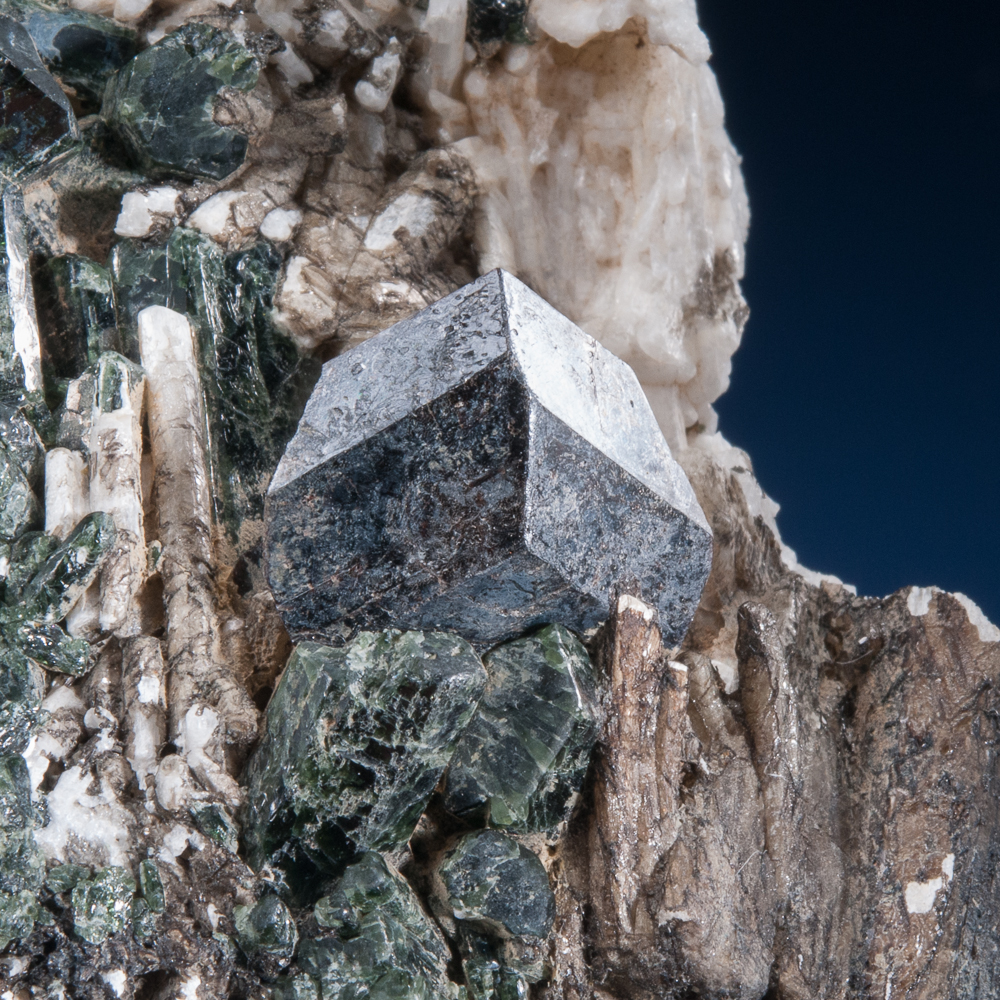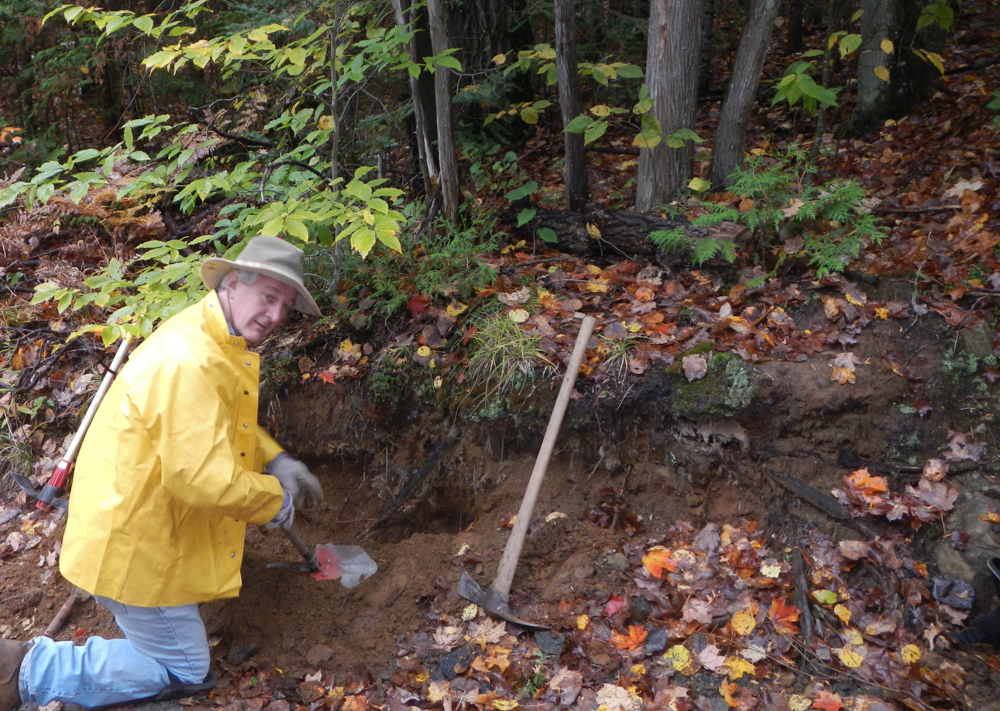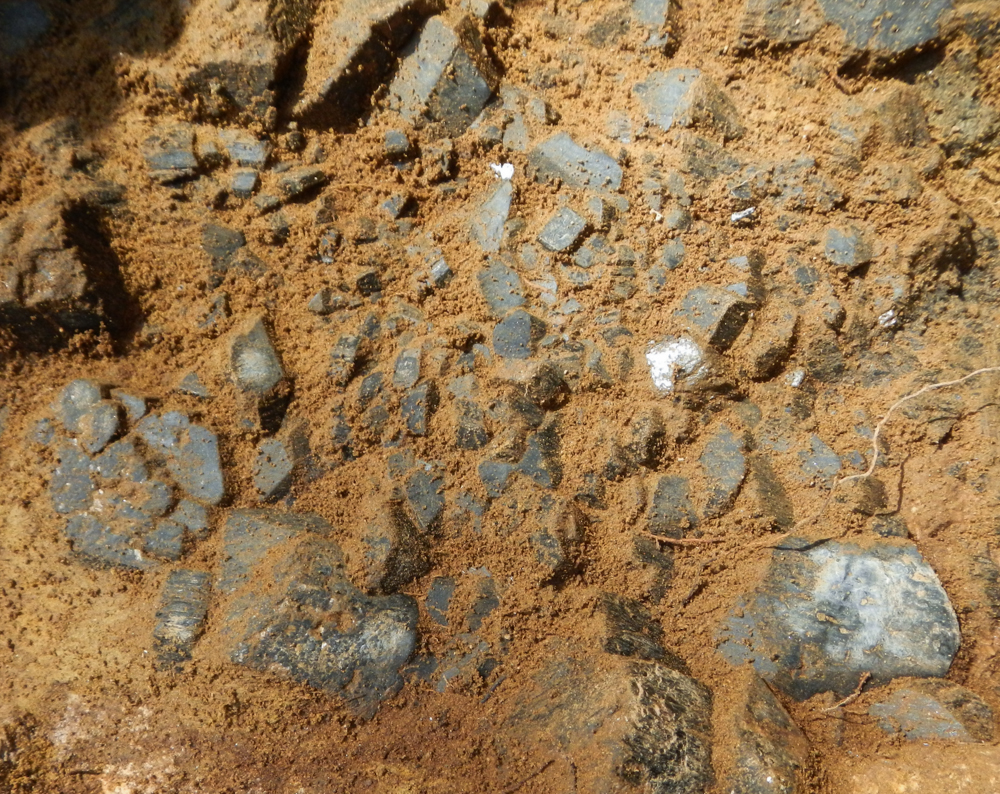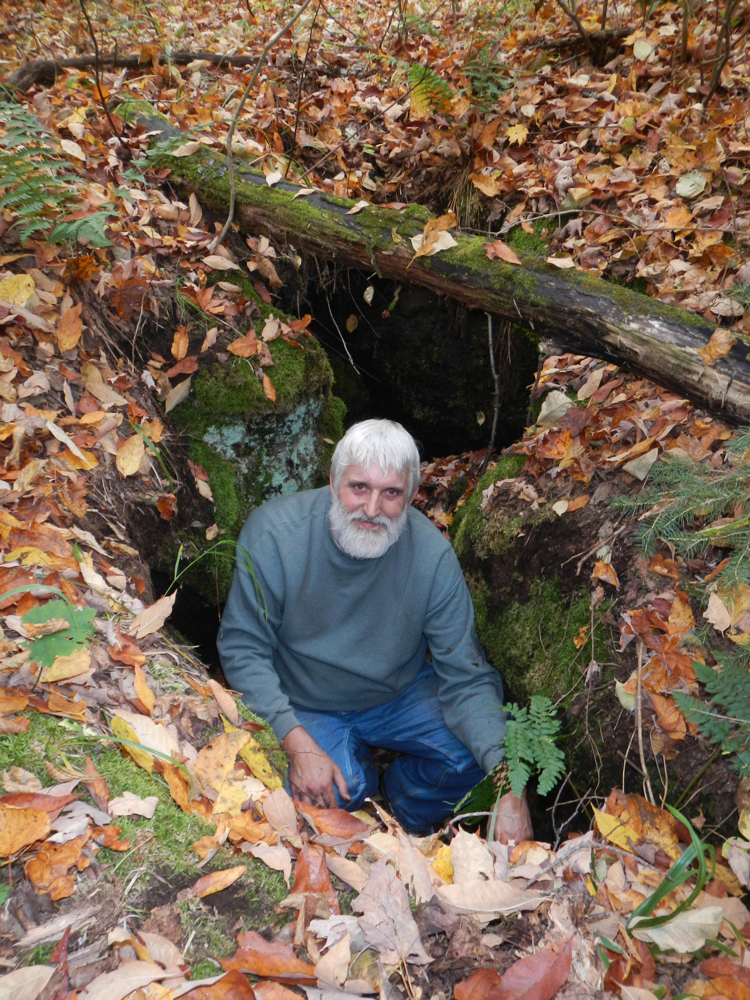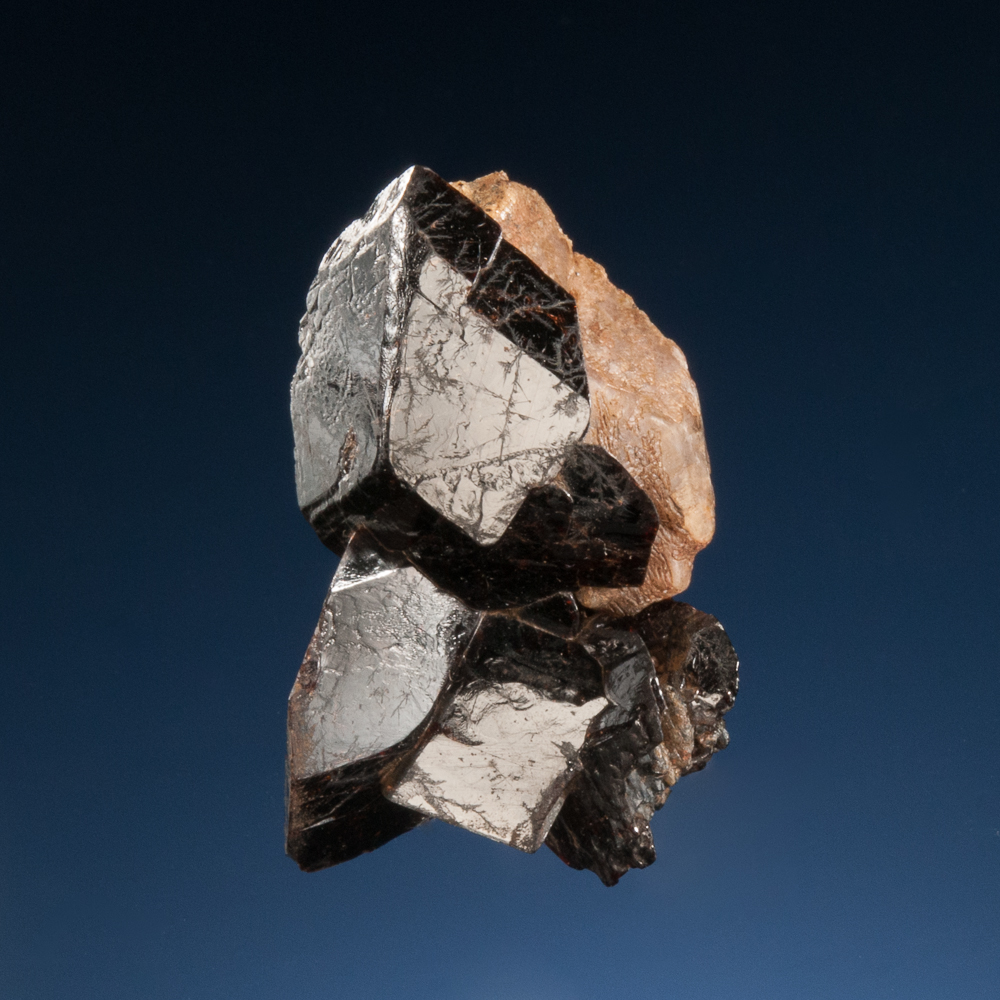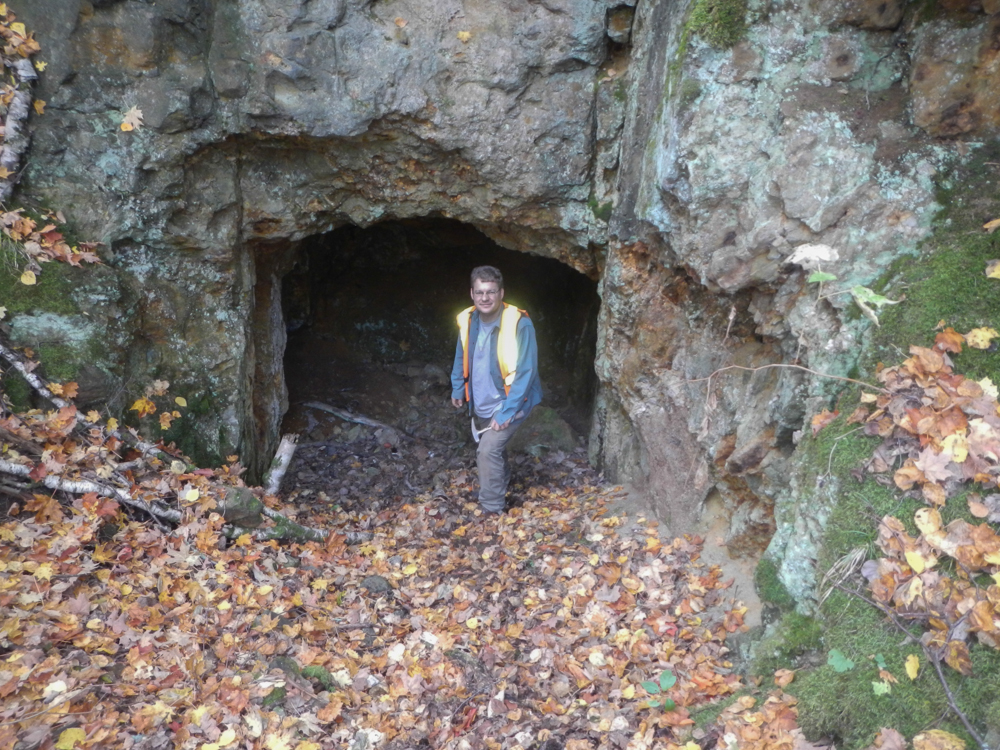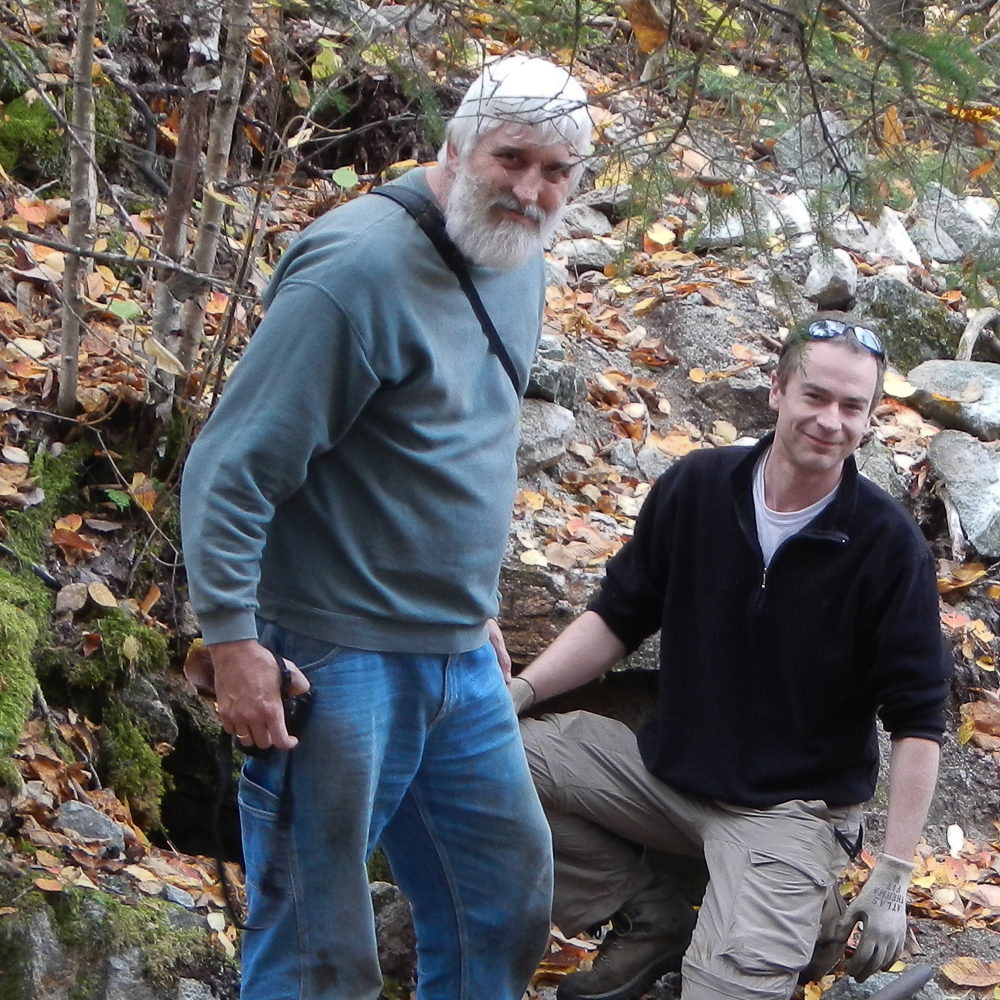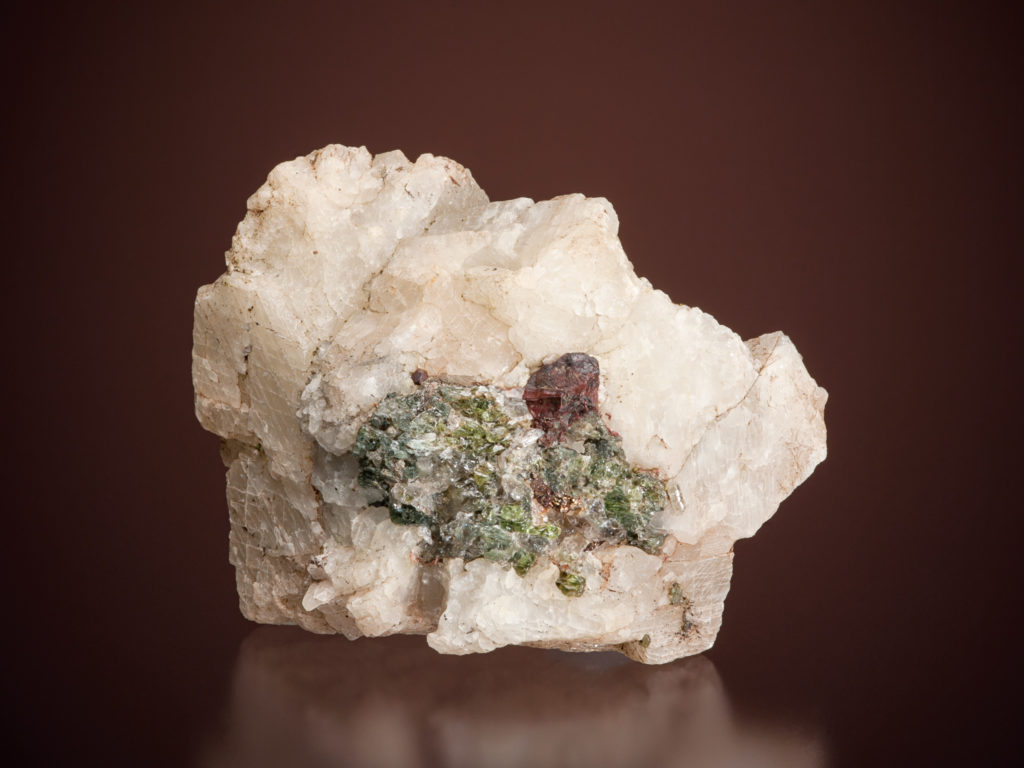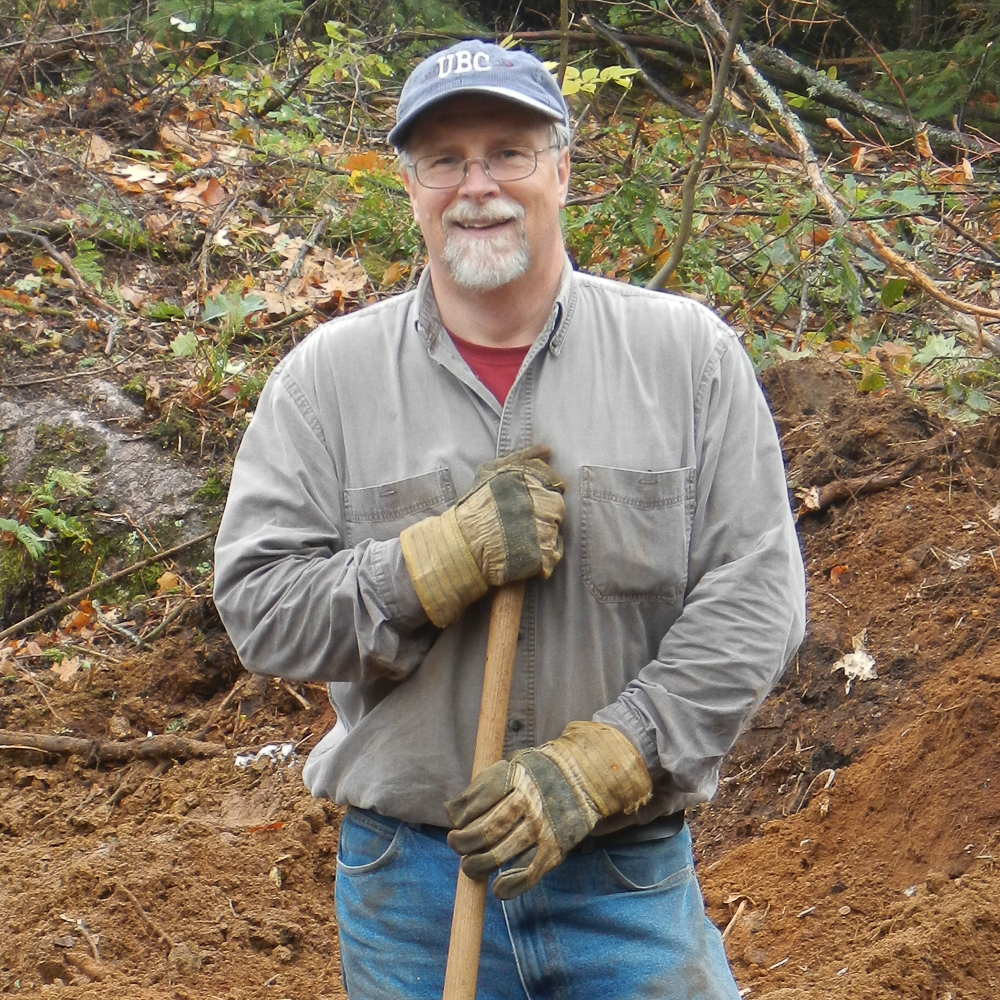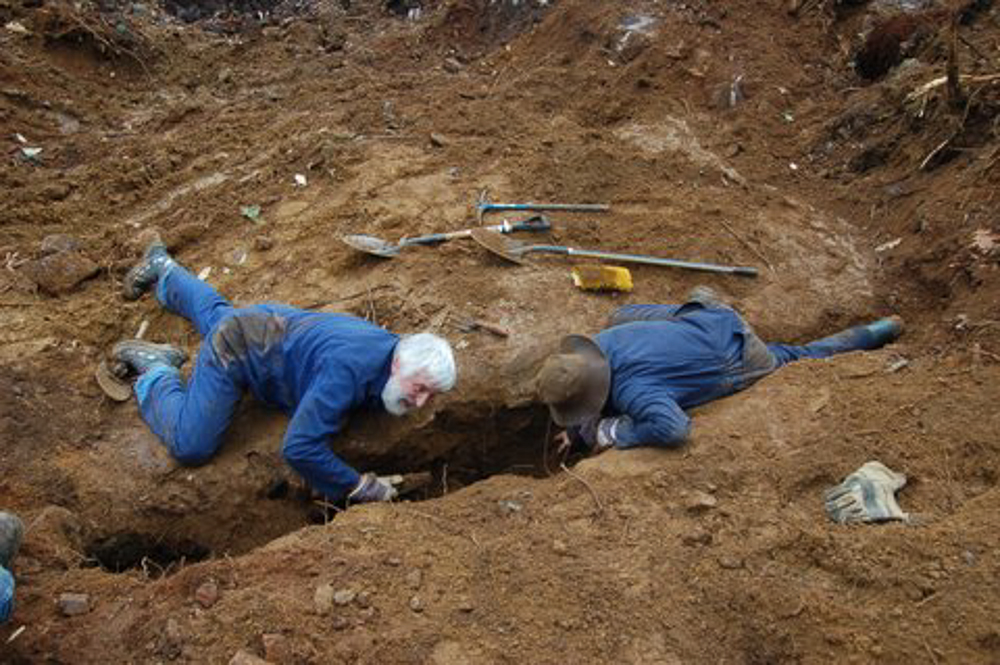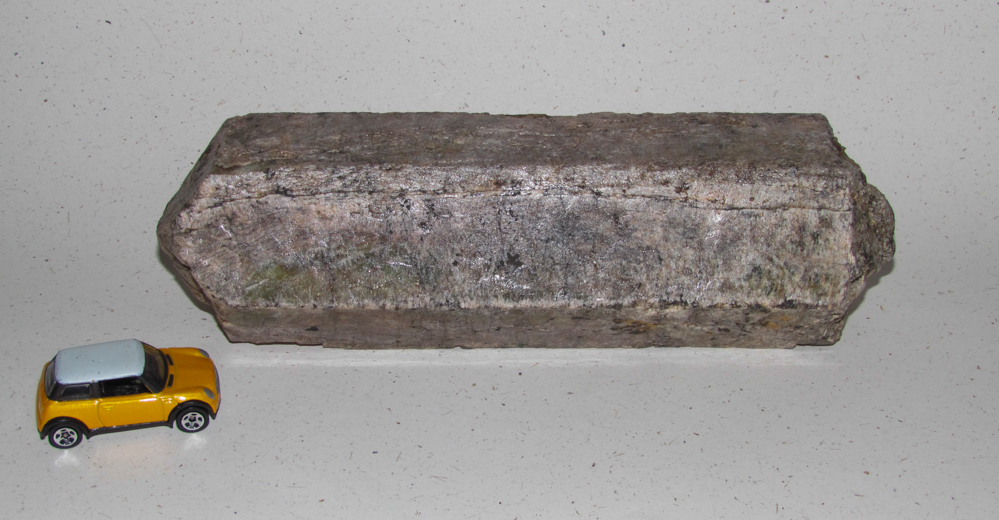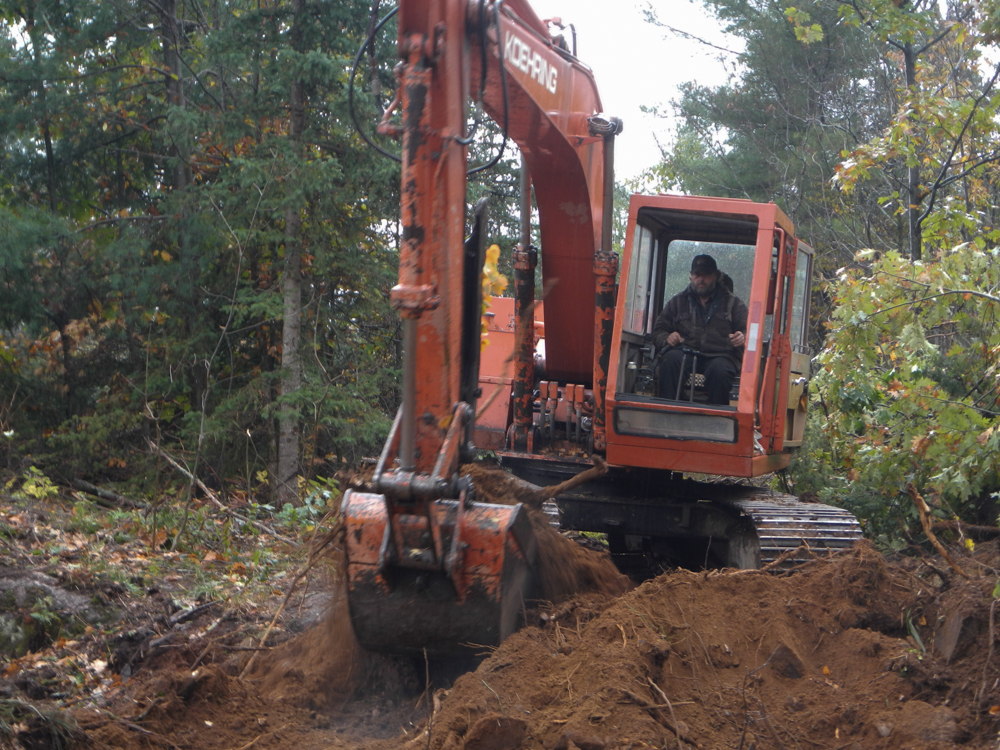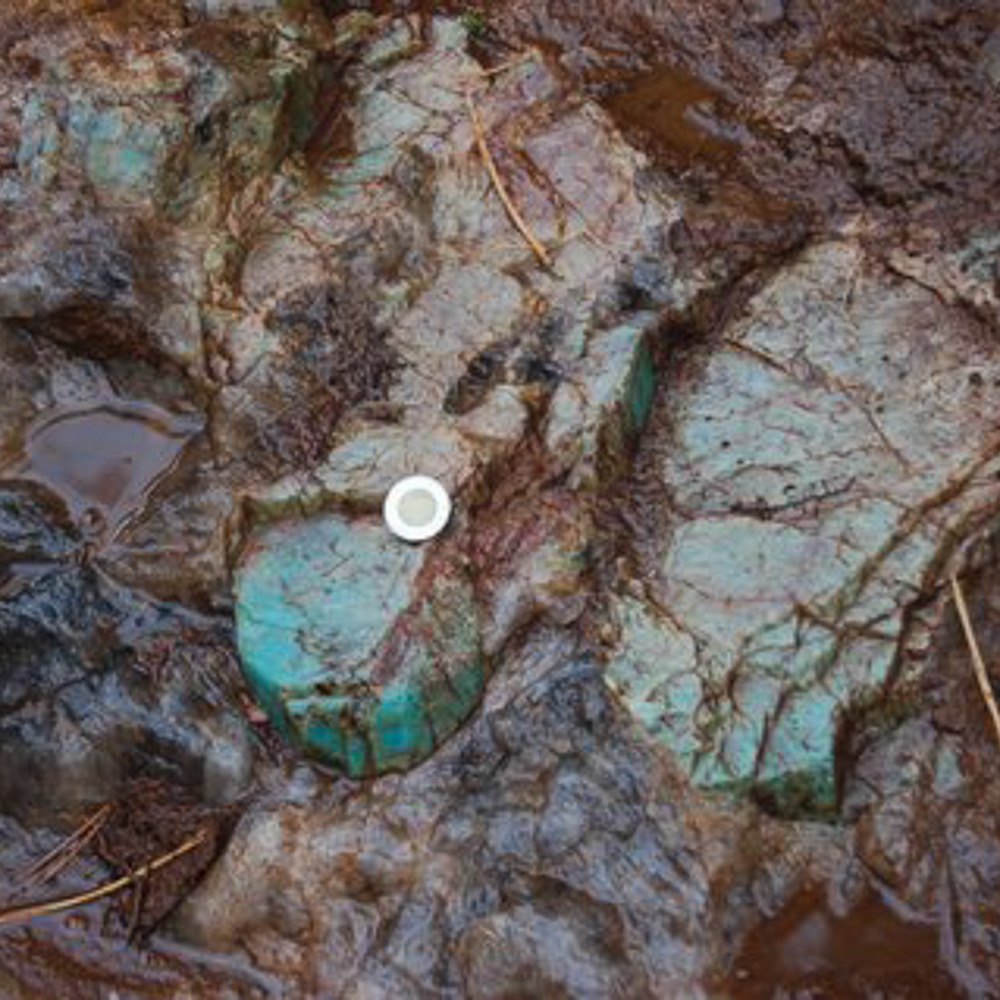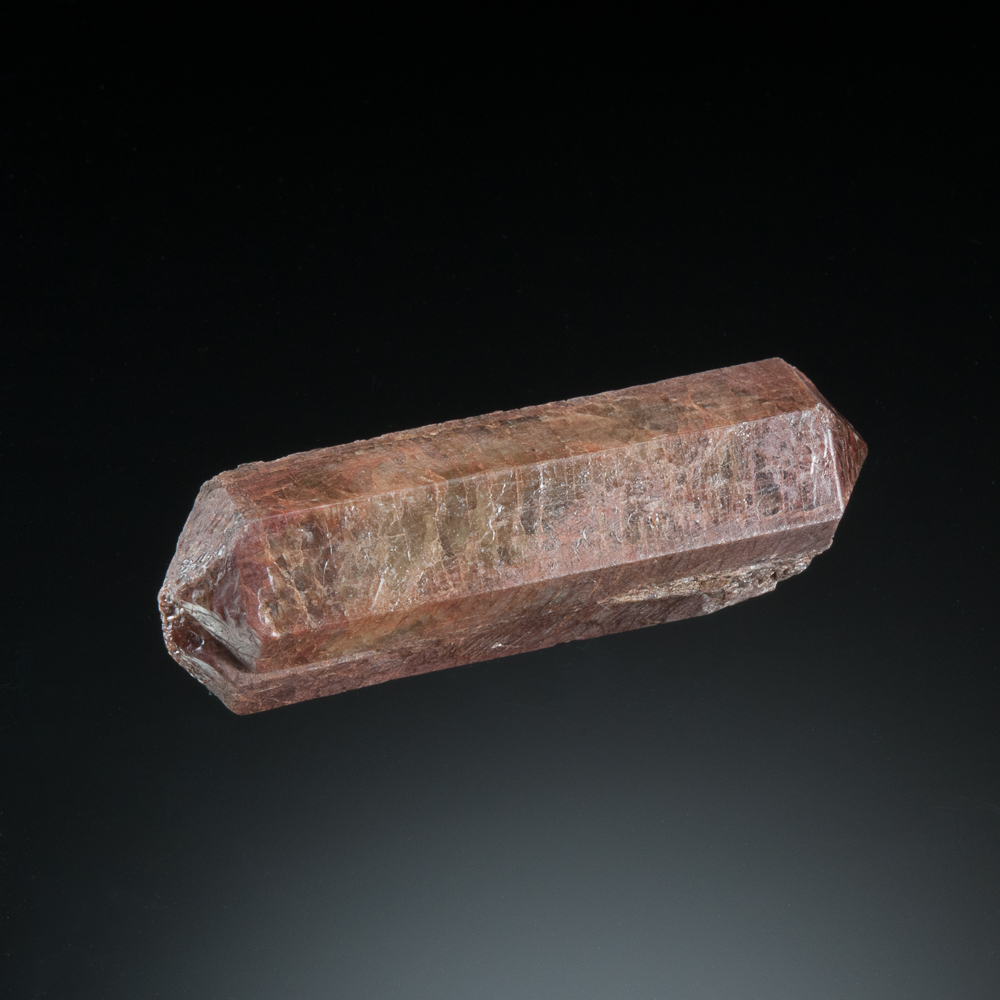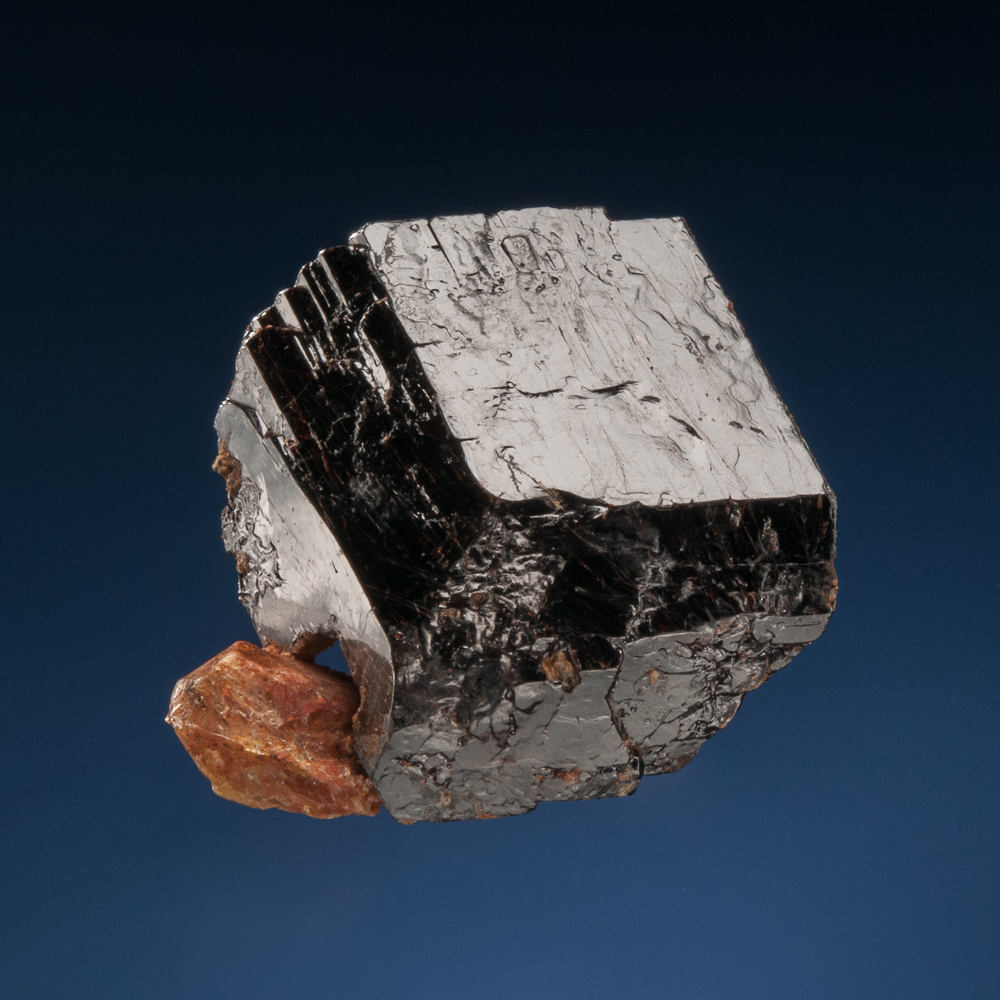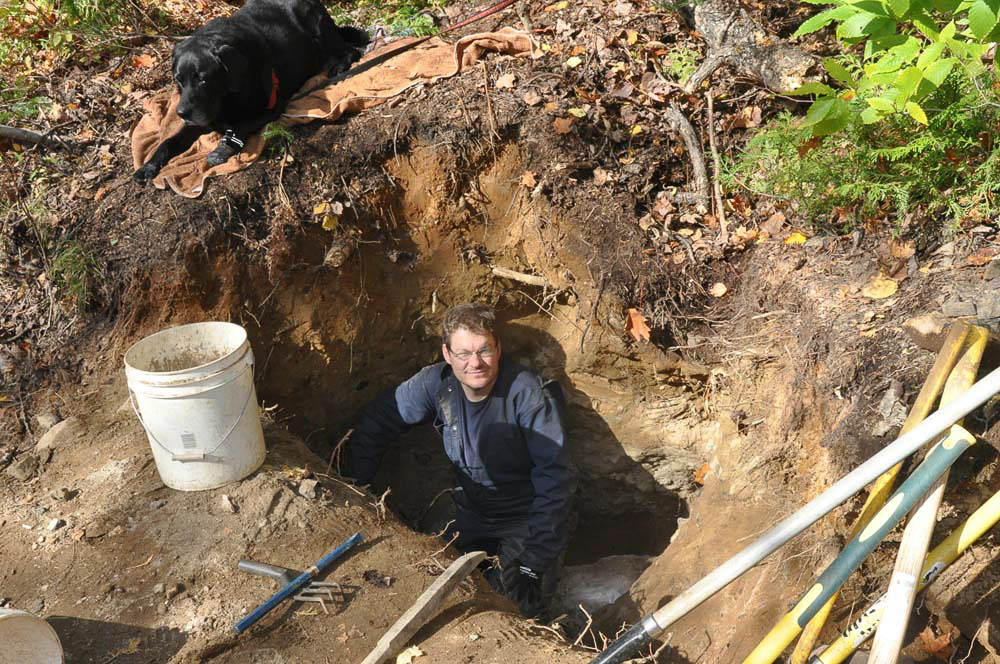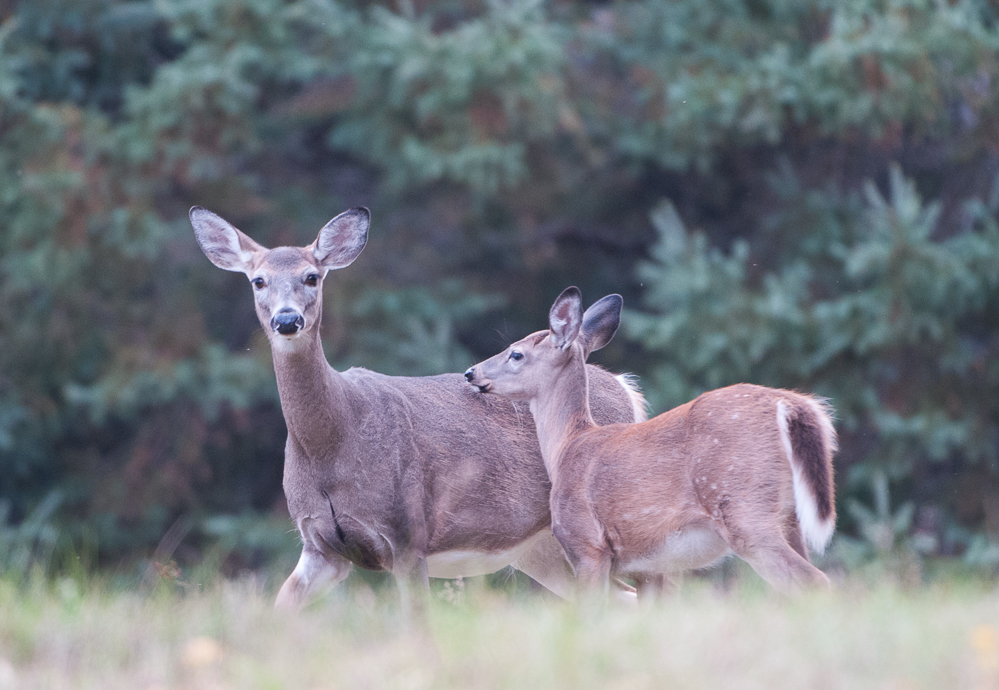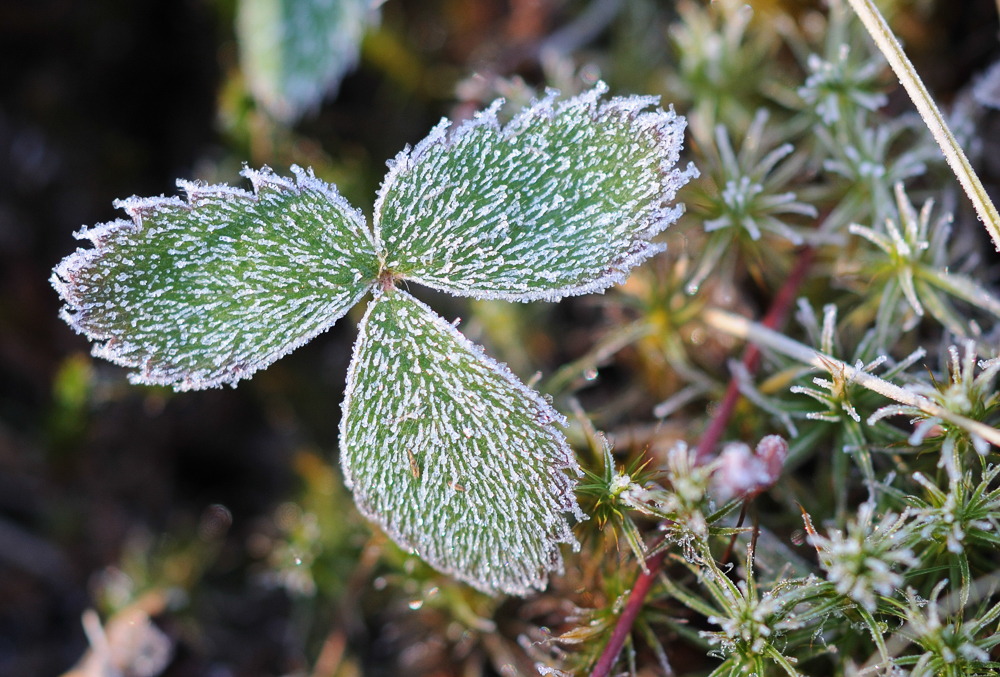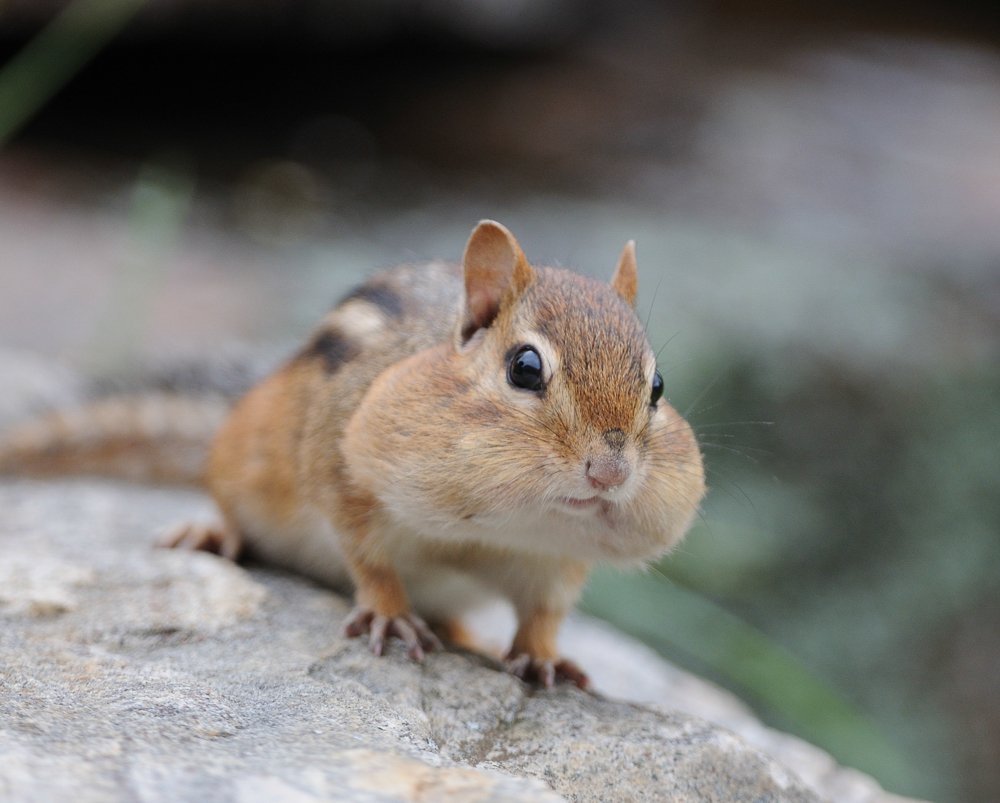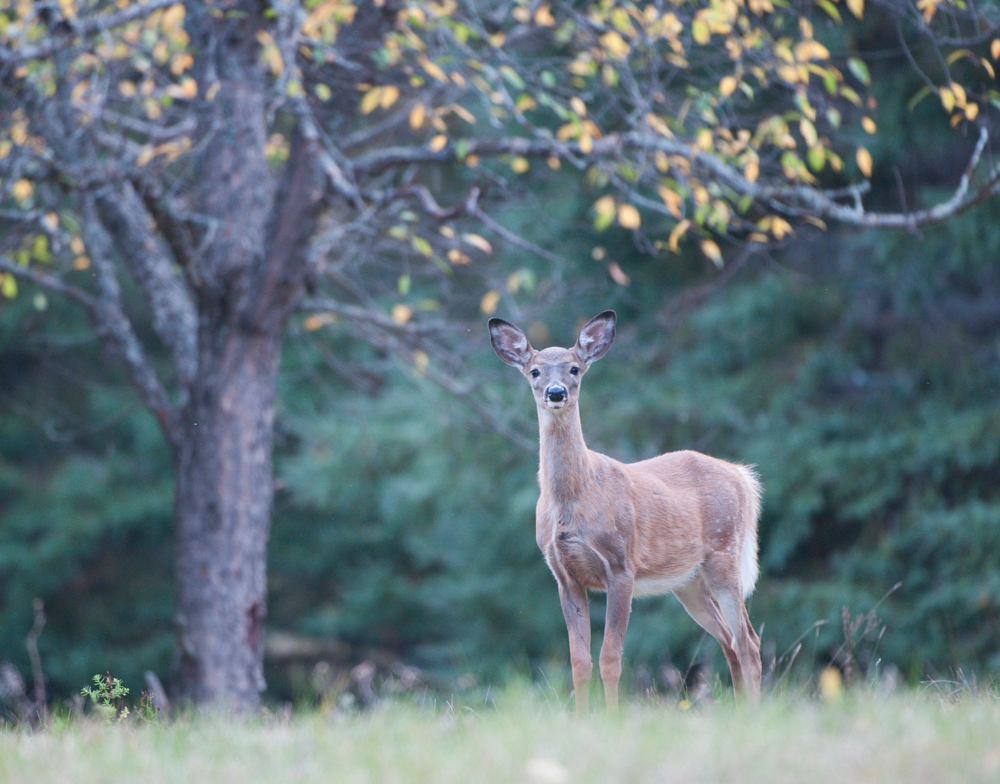Categories
Archives
Bancroft, Ontario is well known among mineral collectors. For over 100 years, specimens from the “Bancroft Area*” have been added to collections around the world, gracing the display cases of museums and private collectors. Photographs of minerals from the Bancroft Area often feature in 20th century North American mineral literature. However, these days, so many of these minerals are classics and can be super hard to obtain – they are seldom available on the international market. Nonetheless, they can be field collected. Although some localities in the region will never produce again, Bancroft mineral collecting continues each year. Of course, finding amazing specimens usually requires tons of hard work and some good luck (knowledge helps too). We sure don’t always come home with awesome display pieces! But every year new great specimens are found in the Bancroft Area.
And fall is a beautiful time here… I thought you might like some glimpses of fall and recent mineral collecting in the Bancroft Area.
Fall colours, Bancroft Area, Ontario
(* For mineral collectors, the term “Bancroft Area” has been used informally and inconsistently over the years to refer to a broad region that extends in a radius of perhaps 50-100km from the town of Bancroft itself. The “Bancroft Area” has variously been considered to include parts of the Haliburton Highlands, Algonquin Highlands, Hastings Highlands and Madawaska Highlands, and I use it inclusively, as many of us do.)
North and Northwest of Bancroft
The regions to the north and northwest of Bancroft are stunning, but we have not seen too many spectacular mineral finds here in recent years. To the further northwest lies Algonquin Park, which is an amazing place (it’s also huge, at 7,653 sq km). It is not a mineral collecting area, but just to deviate from the minerals for a short moment, if you are a first time visitor to this part of Ontario, a drive through the park (and a stop at the interpretive centre) provides great scenery and a super introduction to the wildlife native to the region.
Autumn Blue Jay
By fall, the mosquitoes and black flies are no longer an issue. However, part of the reason the bugs are gone is the cold – by fall, it can be pretty chilly in the mornings. On the bright side, the frost can be a nice compliment to the scenery.
Frosty scene near Lake Opeongo, Algonquin Park, Ontario
At times, some of the fall colours can be so bright that they appear almost unnatural. (If only our minerals were equally colourful!)
Lake of Two Rivers, Algonquin Park, Ontario
The intense colours also make for beautiful more intimate scenes.
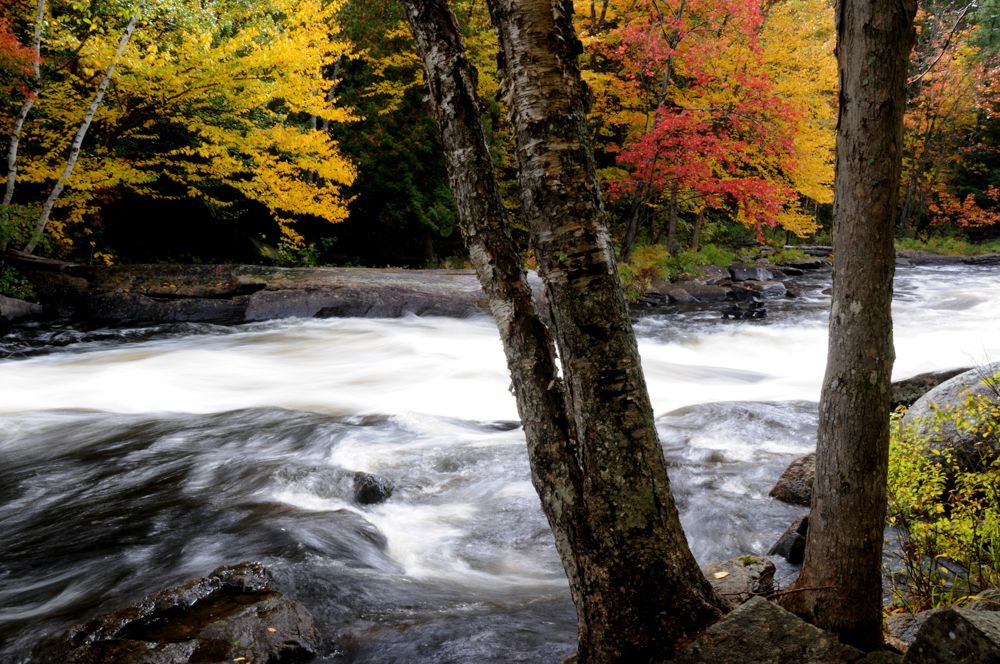 Oxtongue River, near Algonquin Park, Ontario
Oxtongue River, near Algonquin Park, Ontario
And there are lots of great wild animals and birds throughout the larger “Bancroft Area” region.
Curious White-Tailed Deer
Ok, ok, now back to the minerals.
North Baptiste Lake Road
In the area north of Bancroft, and not as far as Algonquin Park, one spot that has produced interesting mineral specimens in very recent times is a forested locality known as the North Baptiste Lake Road occurrence (on private land, permission/arrangements are required). My collecting partner David Joyce and I did some scouting at this locality this year for a couple of days. We found many mineralized zones with scapolite crystals, pyroxene (augite/diopside) crystals, and minor titanite crystals, but they were all in tight seams with poor crystal development and did not yield fine specimens. The most intriguing find from this excursion was a cool molybdenite crystal.
Molybdenite, 3.5 cm blocky prismatic crystal from North Baptiste Lake Road, Hastings Highlands, Hastings Co., Ontario. D.K. Joyce collection and photo.
Out of interest, here are two specimens I acquired from the collector who inspired us to go scouting at this locality in the first place. These specimens were collected in 2013.
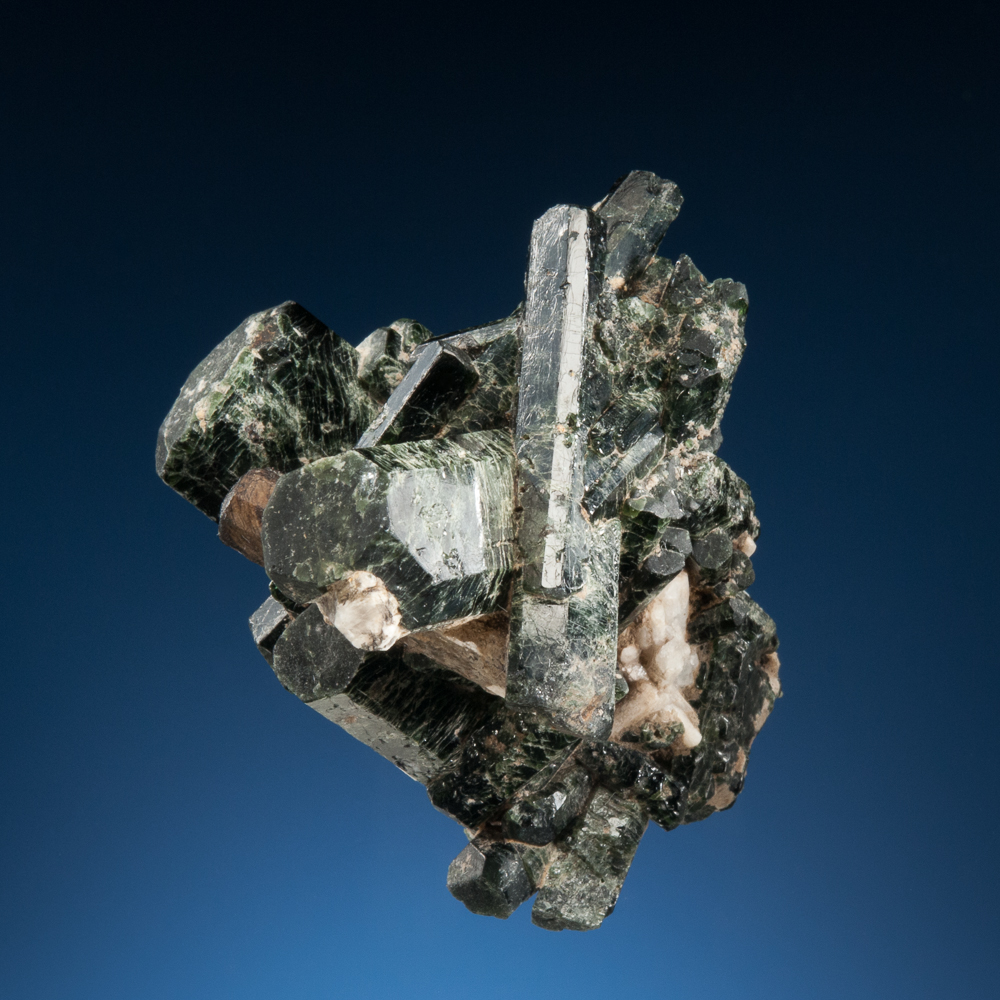 Diopside with Scapolite, North Baptiste Lake Road, Hastings Highlands, Hastings Co., Ontario – 5.1 cm
Diopside with Scapolite, North Baptiste Lake Road, Hastings Highlands, Hastings Co., Ontario – 5.1 cm
Titanite (1.8 cm crystal) with Diopside and Scapolite, North Baptiste Lake Road, Hastings Highlands, Hastings Co., Ontario
Certainly an interesting and prospective area. However, time, hard work and knowledge must be supplemented with good luck too… maybe next time we’ll do a little better!
West of Bancroft
To the west of Bancroft, some of the area’s best localities continue to produce fine specimens and others are prospected in hopes of new finds.
Bear Lake*
[*Important Note: As of May 2016, the Bancroft Chamber of Commerce has sold the property on which the Bear Lake Diggings are situated. This property is now privately owned, and all collecting and visiting are absolutely prohibited by the new owners.]
One of the Bancroft Area’s most prolific localities from the 1980s through to 2015 was “Bear Lake”, also referred to as “the Bear Lake Diggings” and “Bear Lake Road”. For much of this time, the locality was operated on a permit basis for collecting by the public by the Bancroft and District Chamber of Commerce.
Bear Lake is a classic “calcite vein-dyke” occurrence that produced specimens of many minerals but it is best known for excellent lustrous brown titanite crystals (formerly named “sphene” – crystals can reach sizes over 20 cm), green to reddish fluorapatite crystals (in some cases Beak Lake fluorapatite has been faceted into beautiful green stones), very fine crystals of biotite, and the world’s finest crystals of ferri-fluoro-katophorite, for which Bear Lake is the type locality. (Note: ferri-fluoro-katophorite is a black amphibole, sometimes locally just called “hornblende”, but confirmed by electron microprobe analysis (Robert Martin and I did at McGill University) to be ferri-fluoro-katophorite. It has in the past been classified as fluor-magnesiokatophorite. (Tempting to offer editorial thoughts on amphibole nomenclature, but I digress… we’re all going to be tempted to revert to the incorrect “hornblende” pretty soon!) Some of the individual euhedral crystals at Bear Lake were huge: fluorapatite to 45 cm, biotite to 60 cm, orthoclase to 30 cm and ferri-fluoro-katophorite crystals to 30 cm. However, the larger they are, usually the prettier they are not (!), and the fine mineral specimens are usually crystals under 10 cm.
I was out to Bear Lake a few times in 2014, but I confess with very limited success. I’ve been collecting at this locality since I was a kid, and have found many great things there over the years, but this year was more about scouting and test trenches – it did not yield much in the way of fine specimens. It was fun though!
David Joyce as we commence digging on a vein-dyke with promising ferri-fluoro-katophorite crystals at surface. Photo of final trench is near the end of this post.
After two days of major digging (by hand), we had exposed walls of sharp ferri-fluoro-katophorite crystals up to about 10 cm. Unfortunately, even down to depths of about 2 metres from surface, the crystals were either frost-fractured or otherwise weathered/damaged, and so although it was a cool crystal cavity to see, it did not yield fine specimens.
Ferri-fluoro-katophorite crystals to 10 cm exposed on calcite vein-dyke wall after two days of excavation.
Herwig Pelckmans, about to start in on a Bear Lake vein dyke. This one ultimately produced a nice large cabinet specimen of sharply terminated biotite crystals.
Bear Lake was a fine example of a place where Mother Nature reclaims the forest incredibly quickly. Even though collectors had been digging trenches here since the 1960s, the forest is quite beautiful and the old workings are sometimes truly no longer apparent.
Of course, this meant that we had to be careful not to fall into any holes that had become obscured from view. But it also meant that there is one thing that all experienced Bear Lake collectors would dread. Nope, not the black bears that roam these woods. We would fear that after hours excavating a vein-dyke, we would find incontrovertible evidence that someone already excavated it years ago (and Mother Nature had reclaimed it just enough to mask that fact… and make look like a good fresh spot to dig…).
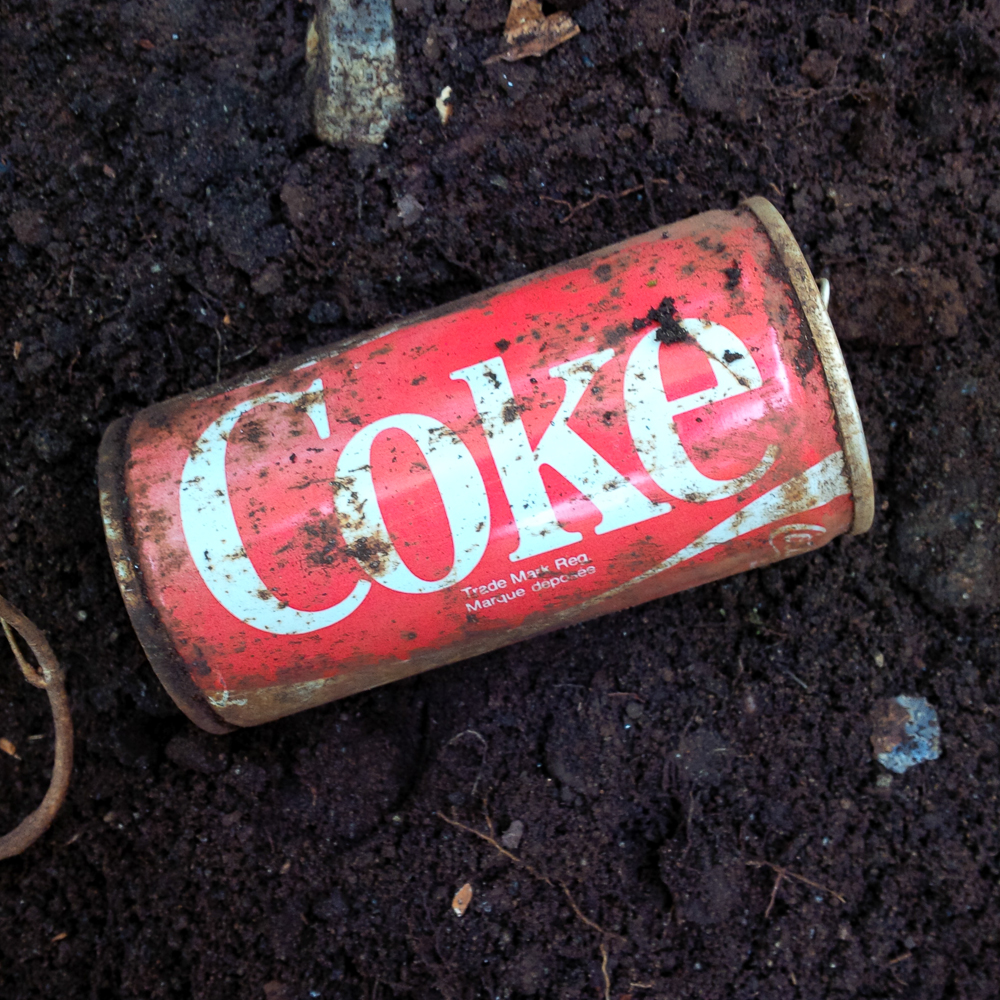 Early-1980s Canadian 280 ml Coca-Cola can. Excavated in 2014.
Early-1980s Canadian 280 ml Coca-Cola can. Excavated in 2014.
I don’t want to leave Bear Lake without doing it at least a tiny bit of justice – even if this was a low year, this locality has produced some great specimens in the past – here is a glimpse of examples of Bear Lake minerals from prior years.
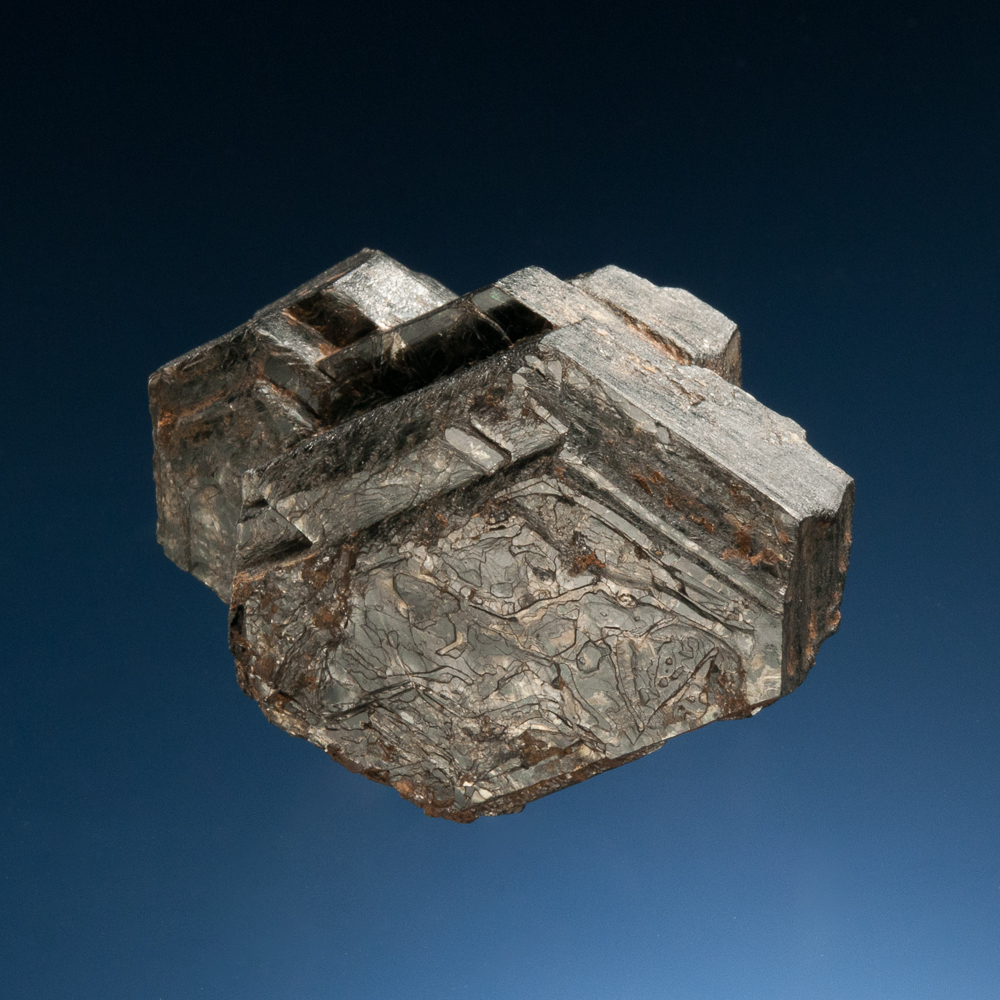
Biotite (doubly terminated, floater), Bear Lake, Highlands East, Haliburton Co., Ontario – 5.8 cm
Titanite, Orthoclase and frosty little tracks of Anatase, Bear Lake, Highlands East, Haliburton Co., Ontario – 5 cm
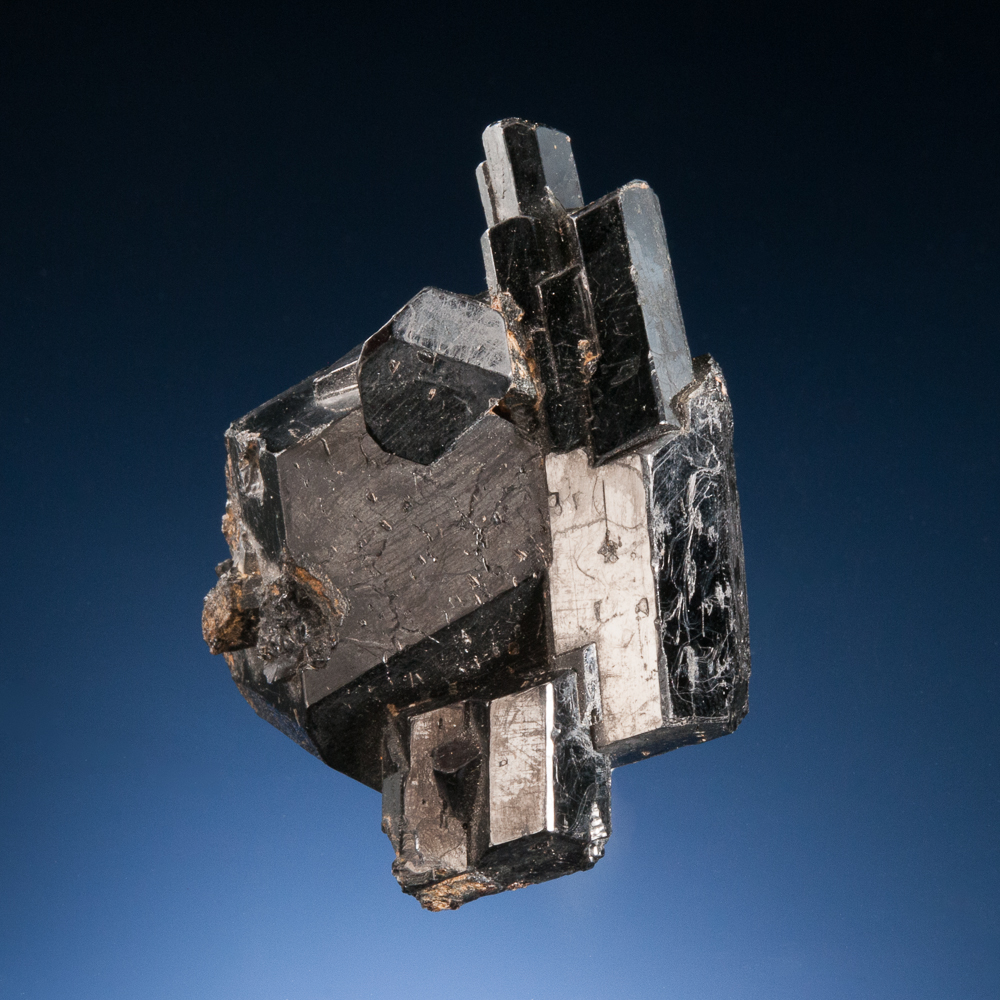 Ferri-Fluoro-Katophorite, Bear Lake, Highlands East, Haliburton County, Ontario – 6.8 cm
Ferri-Fluoro-Katophorite, Bear Lake, Highlands East, Haliburton County, Ontario – 6.8 cm
Desmont Mine Property
Not too far from Bear Lake, another locality is generating interest – this is the Desmont Mine property, near the town of Wilberforce. Originally explored for uranium mineralization in 1954-55, this property includes more than one area of test workings which expose interesting minerals for the collector. We had a great day for an outing – I was there with local collector and Canadian mineral photographer Michael Bainbridge, Bancroft collector and geologist Chris Fouts and collector Herwig Pelckmans, as we scouted various zones of the property.
Small adit at the Desmont Mine property (me for scale). H. Pelckmans photo.
Herwig Pelckmans and Michael Bainbridge at the Desmont Mine property
At the Desmont, there are many unusual minerals and although many do not form euhedral crystals, there are some: particularly intriguing diopside crystals (including chromian diopside), sharp molybdenite crystals (apparently crystals to several cm in diameter) and most of all the locality is known for small maroon stillwellite crystals (up to approximately 0.5 cm known so far). Granted, the stillwellites are not easy to find, but they are cool for the mineral.
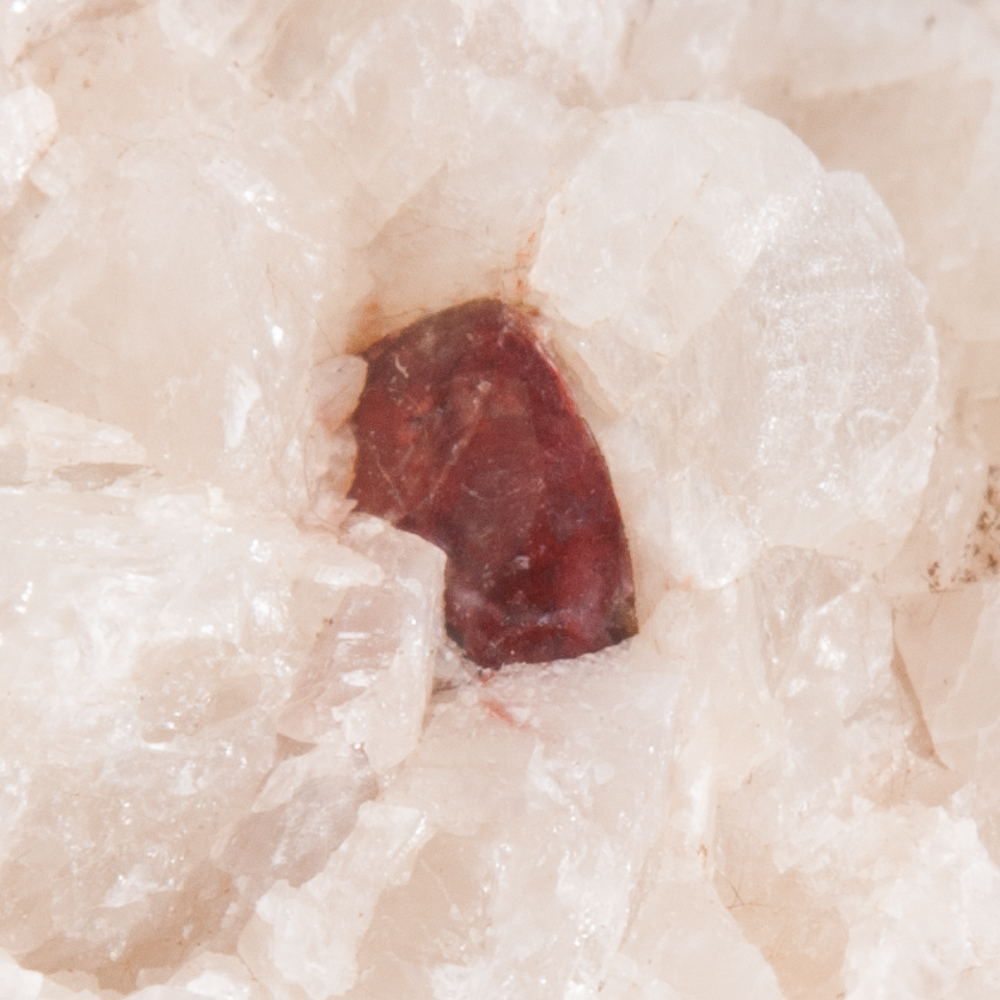
Stillwellite, Desmont Mine Property, Highlands East, Haliburton Co., Ontario – 0.3 cm crystal (Note hexagonal pinacoid face)
Well-known Canadian mineral photographer and collector Michael Bainbridge has had some good recent trips to the Desmont Mine, having found stillwellite crystals up to 1 cm, larger than previously reported for the property.
Stillwellite (0.6 cm crystal) with Diopside in Calcite, Desmont Mine Property, Highlands East, Haliburton Co., Ontario. M. Bainbridge specimen and photo.
I had an additional interesting find at the Desmont this year – a beautiful, sharp, complete euhedral crystal of albite, variety peristerite, with as bright a schiller as I have ever seen in an Ontario peristerite. It’s small, but sweet!
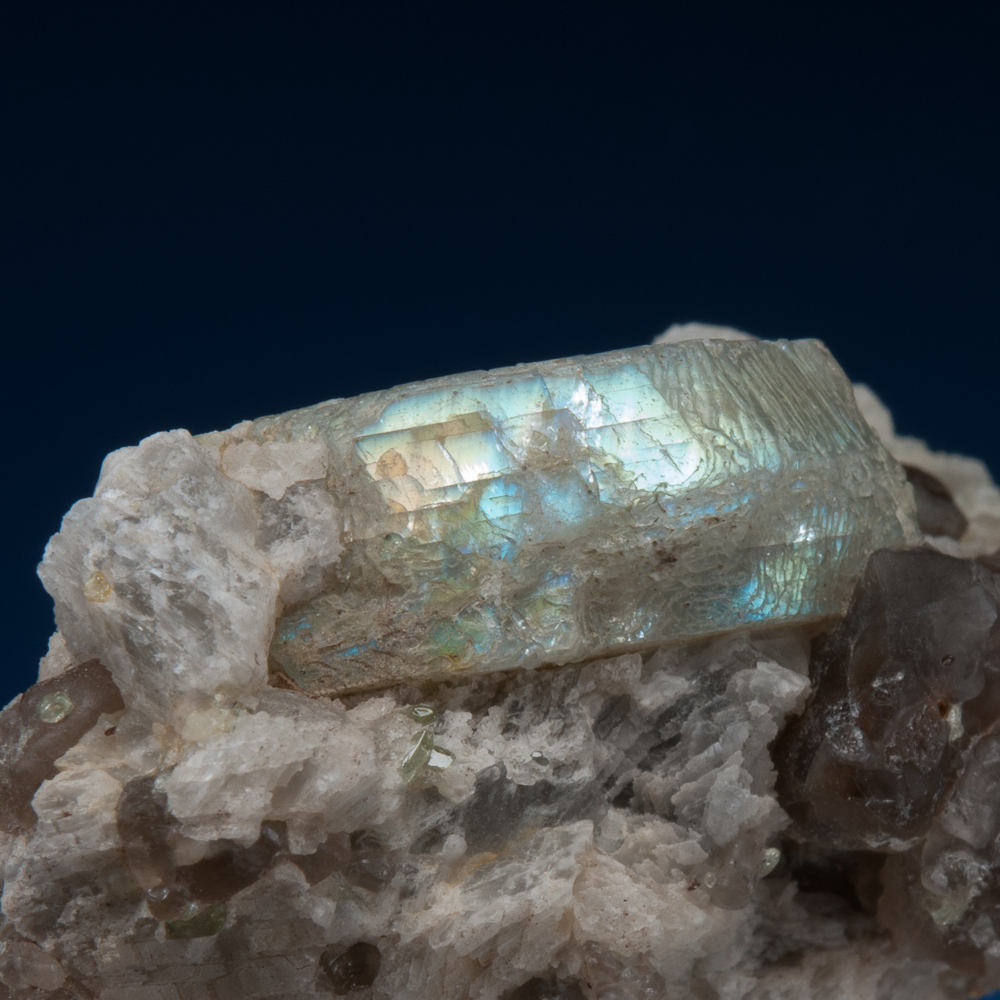
Albite, variety Peristerite, Desmont Mine Property, Highlands East, Haliburton Co., Ontario – 1.5 cm crystal
The Desmont Mine locality is open to the public on a permit collecting basis – permits are obtained at the offices of the Highlands East municipality in Wilberforce. This municipality is very progressive and actively working to help mineral collectors access and open more localities in the Wiberforce area, so stay tuned! (The municipality also now administers permit-collecting access to the recently re-opened Schickler fluorite occurrence, where reddish and greenish fluorapatite crystals occur in calcite associated with deep purple granular fluorite.) Seems like the Wilberforce area will be a good one to visit over the coming years.
Northeast of Bancroft
Elk, near Hartsmere, Ontario
Miller Property
One of the most famous classic Canadian localities is often referred to in the literature or on old mineral labels simply as “Lake Clear, Renfrew Co.” The Lake Clear area, northeast of Bancroft, is actually not a single locality, but rather it includes several famous old mineral localities, including Turner’s Island, the Smart Mine, the Meany Mine, and the “Lost Mine”. (Lake Clear is approximately 100km northeast of the town of Bancroft – not so close – and is often considered by mineral collectors to be part of the “Bancroft Area”. In part, this is because of the geological and mineralogical similarities with other Bancroft Area localities, all part of the Grenville Geological Province). In recent years, in the forests east of Lake Clear, the Miller Property – in the immediate vicinity of the Smart Mine and which in fact encompasses the deposit formerly known as the “Lost Mine” – has produced some truly excellent specimens. This is another calcite vein-dyke locality, and this one is particularly known for the classic large red-brown fluorapatite crystals and excellent titanite crystals. Large augite crystals, orthoclase-microcline crystals and biotite crystals have also been found. Very rarely in the past this property also produced nice zircon crystals.
This year the Miller Property was the destination for a well-attended club field trip by the Walker Mineralogical Club and the Kawartha Mineral Club. A small group of us opened up a good vein dyke containing a large number of fluorapatite crystals.
Prominent Canadian collector Bob Beckett moved a lot of ground as we worked together at the fluorapatite trench. He did a good job hiding his disappointment we weren’t finding more biotite crystals.
As is often the case, we got very dirty excavating the fluorapatite crystals. This vein-dyke was narrow and tough to collect. R. Beckett photo.
The large complete crystal from this trench is now in the collection of Herwig Pelckmans. He parked his car beside the crystal for scale before taking this photograph.
Fluorapatite, Miller Property, Sebastopol Township, Renfrew Co., Ontario.
H. Pelckmans specimen, photo and car.
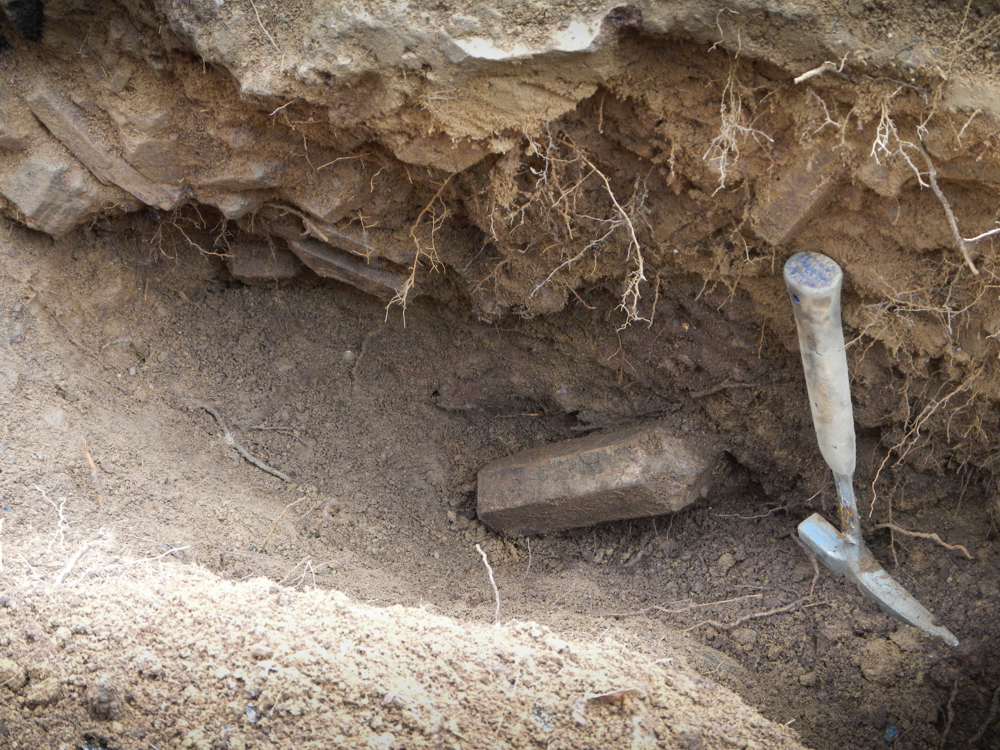 Partially excavated calcite vein dyke containing fluorapatite crystals. The large crystal here is the same one in the photo above, now in Herwig’s collection. It is 25.5 cm long. Note the crystals on the hanging wall. Most were attached and could not be collected (they shatter).
Partially excavated calcite vein dyke containing fluorapatite crystals. The large crystal here is the same one in the photo above, now in Herwig’s collection. It is 25.5 cm long. Note the crystals on the hanging wall. Most were attached and could not be collected (they shatter).
Many of the crystals in this trench were not so sharp and lots were frost-damaged, but there were some nice ones too. This one is quite typical for Lake Clear fluorapatite, if perhaps a little more pinkish than usual:
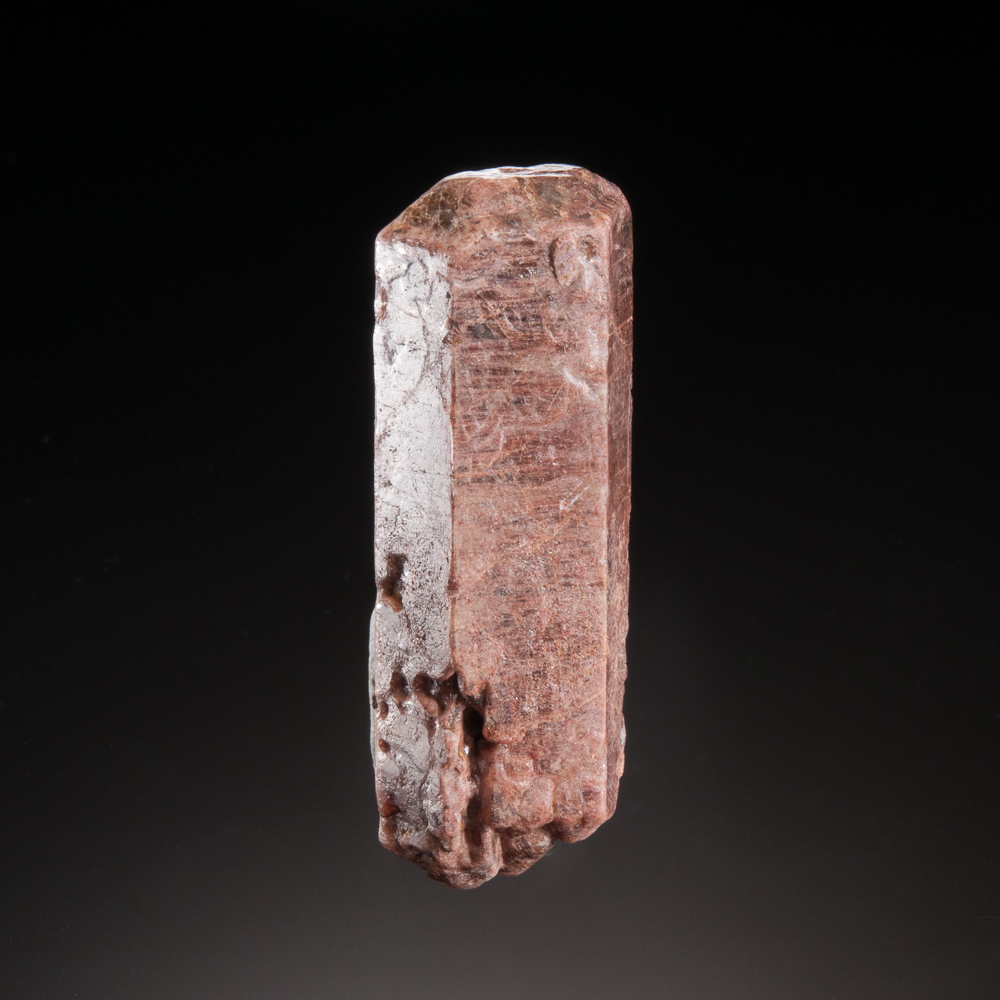
Fluorapatite, Miller Property, Sebastopol Twp., Renfrew Co., Ontario – 6.3 cm
Keith Miller, this property’s owner, is as generous and gracious about mineral collecting as I have ever seen – for club trips, he has opened the property up, including with heavy equipment, and the fees he collects per person are then donated to a local children’s hospital. Please note that one must absolutely not go to this locality (any locality, for that matter) without proper arrangements. This may include the specifically organized field trips that are set up by mineral clubs from time to time. It would be tragic should anyone undermine the goodwill and kindness between the collecting community and this remarkable property owner. How rare it is in this day and age that we (collectors) are fortunate enough to be accommodated, with specimens from a classic locality being preserved like this!
Excavator at the Miller Property, Sebastopol Township, Renfrew Co., Ontario.
One particularly interesting note from the club trip at the Miller Property this year – in the same area where the calcite vein-dykes occur, a pegmatite was excavated. The pegmatite included a few euhedral microcline var. amazonite crystals up to over 10 cm. Given the nature of the hard-rock occurrence, I am not sure how many of these were successfully removed intact but some certainly were. This is very unusual – I believe these would be considered the best amazonite crystals ever found in the Bancroft Area. We’ll have to keep our ears open to learn what other collectors managed to find in the pegmatite excavation during the field trip.
Microcline var. Amazonite in situ, with Canadian “Toonie” coin (2.8 cm diameter) for scale. Miller Property, Sebastopol Township, Renfrew Co., Ontario. R. Beckett photo.
Here are a couple of specimens found at the Miller Property in recent years:
Fluorapatite, Miller Property, Sebastopol Twp., Renfrew Co., Ontario – 8.0 cm
Titanite with Fluorapatite, Miller Property, Sebastopol Township, Renfrew Co., Ontario – 5.1 cm
Bancroft Mineral Collecting, 2014
Although awesome mineral specimens continue to come from many different mineral localities in the Bancroft Area, my own 2014 experiences produced only a very few interesting specimens. The large fluorapatite we found at the Miller Property is a remarkable specimen and a true classic, and there were certainly other cool pieces here and there this year. And yet, quite often, all that hard work and knowledge still leaves you at the bottom of a big freshly-dug hole without anything brilliant for the display cabinet.
At the bottom of a two-day hole at Bear Lake, dug together with David Joyce. No collection-worthy specimens from this effort. And no help from an excavator. Emery (at upper left) supervised.
D.K. Joyce photo.
So, this was not a year full of endless spectacular specimens, and I appreciate what we did manage to find. In any event, my excursions this year could not have been better for scenery, wildlife and good times with good friends.
It’s always worth going out in the woods, and you never know what lies around the next corner.
White-Tailed Deer – Doe and Fawn
Ice Crystals on Wild Strawberry Leaf
Chipmunk, Collecting Food for the Winter
White-Tailed Deer – Fawn
Bay Lake, Faraday Township
Thanks!
Thank you to Keith Miller, for graciously making the Miller Property accessible to the mineral collecting community, and also to the folks at Highlands East, who are working hard to bring more properties in the Wilberforce area online for collectors. And thanks to the Bancroft and District Chamber of Commerce for all that is done to keep Bear Lake open and accessible to all. I am grateful to Joe Neuhold for all that he does for the elk and the deer in the Hartsmere area. Thanks to Michael Bainbridge and Bob Beckett for the great photos, and thanks to both of you and Herwig Pelckmans for great times out in the woods this year. Huge thanks to my long-time collecting partner David Joyce, for all the fun and collaboration on our many collecting adventures (also the moly photo).
About the Minerals Photographed in this Post
Except as otherwise attributed, the minerals photographed in this post are included here because I love sharing them, not for sale. (Some of the ones that I personally collected are my children…)
About the Website
If you have landed on this post without having explored our website, please have fun looking around – there are tons of photographs of minerals from all over the world that are available for purchase (you can surf through by using the “Browse” options (click here , and you’ll see the Browse options at left). Other blog articles are under the tabs Adventurers and What’s New Blog (you may wish to scroll a bit to explore within the What’s New Blog, as all of the weekly specimen updates are under this tab too).
If you are interested in more information relating specifically to Bancroft, Ontario and minerals, have a look – there is a post about the Bancroft Mineral Museum (the Bancroft Gem and Mineral Club Museum) and also one about our annual Bancroft Mineral Shows. A brief more general introduction to Bancroft is under About Bancroft.


